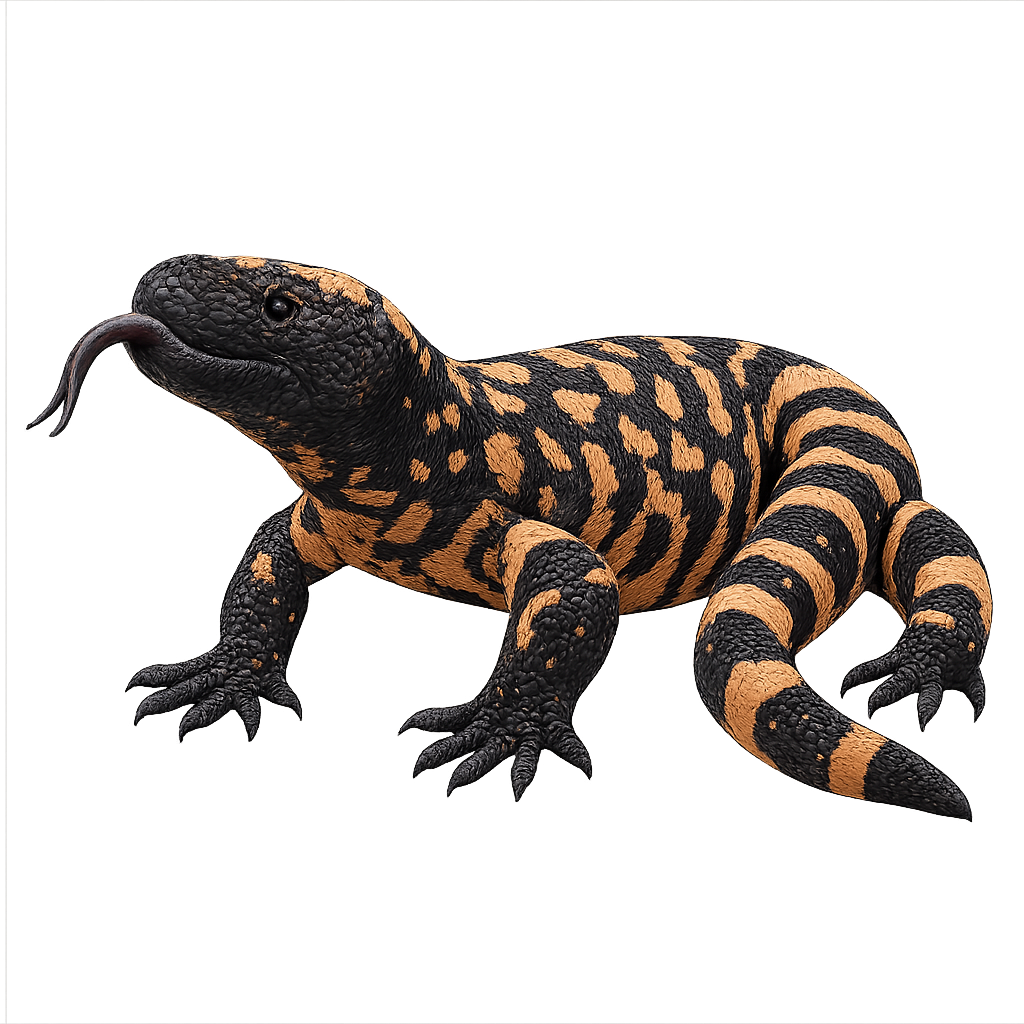Your wildlife photography guide.
Explore the gila monster in detail, study its behavior, prepare your shots.
Where to observe and photograph the gila monster in the wild
Learn where and when to spot the gila monster in the wild, how to identify the species based on distinctive features, and what natural environments it inhabits. The WildlifePhotographer app offers tailored photography tips that reflect the gila monster’s behavior, helping you capture better wildlife images. Explore the full species profile for key information including description, habitat, active periods, and approach techniques.
Gila monster
Scientific name: Heloderma suspectum

IUCN Status: Near Threatened
Family: HELODERMATIDAE
Group: Reptiles
Sensitivity to human approach: Very shy
Minimum approach distance: 10 m
Reproduction period: February to June
Incubation: 120-150 jours
Births: February to June
Habitat:
Scrubland, succulent desert, and oak woodland
Activity period :
Mainly active at night, generally discreet during the day.
Identification and description:
The Gila monster is a large venomous lizard, reaching 30–56 cm in length, with a robust body and bead-like scales patterned in yellow, pink, and black. Native to the deserts of the Southwestern United States and northern Mexico, it inhabits scrubland, succulent desert, and oak woodland, feeding mainly on small mammals, birds, and eggs. As the breeding season (April to June) approaches, males become territorial and exhibit dominance displays by lifting their bodies and bobbing their heads before mating.
Recommended lens:
300 mm – adjust based on distance, desired framing (portrait or habitat), and approach conditions.
Photography tips:
Photograph the Gila monster from a distance using a telephoto lens of ≥300 mm at dawn or dusk, positioning low to isolate its coloured body. Use a fast shutter speed and shallow depth of field, and remain silent to avoid startling it.
The WildlifePhotographer App is coming soon!
Be the first to explore the best nature spots, track rutting seasons, log your observations, and observe more wildlife.
Already 1 432 wildlife lovers subscribed worldwide

